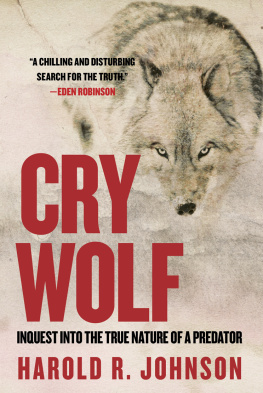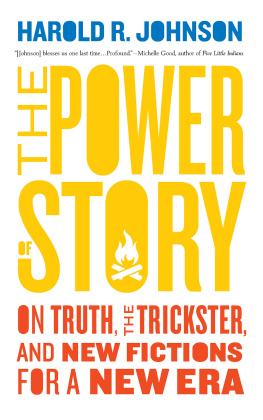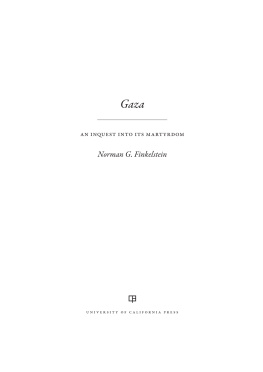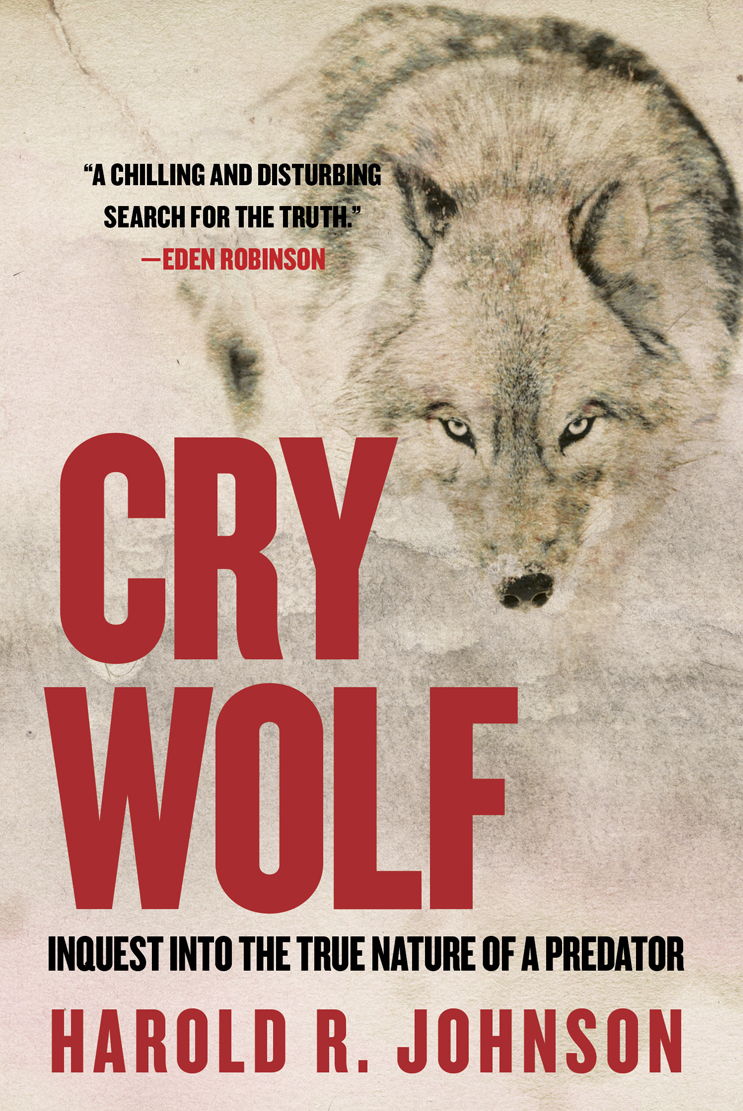advance praise for
Cry Wolf
Harold Johnson has taken on one of the most controversial topics in Human-Animal relations, and he has done so with discipline, integrity, and compassion for both sides. Johnsons deep knowledge of wolves and wilderness, and also of the law and investigative procedure, make him uniquely qualified to offer this careful and methodical analysis of several recent wolf attacks. As timely as it is challenging and necessary, Cry Wolf is required reading for anyone invested in our shared future with these powerful and complex creatures.
John Vaillant, author of The Tiger and The Golden Spruce
Cry Wolf is a crucial and timely examination of our shifting relationship to the land in general and to the Canis lupus in particular through the lens of a fatal animal attack on geographical engineering student Kenton Carnegie in 2005 near his work camp in northern Saskatchewan. Contextualizing the first recorded kill of a human by wild wolves in Canada in the last century, Johnson meticulously examines his death and the resulting coroners inquest in a chilling and disturbing search for the truth.
Eden Robinson, author of Son of a Trickster
Timely, challenging, and gripping, Cry Wolf is a forensic study of the prejudices and preconceptions with which we treat the natural world.
Adam Weymouth, author of Kings of the Yukon
Relationships with predators are complex and challenging in an increasingly human-dominated world. I know so because for 25 years I have lived with my family in a remote place where the predator population outnumbers the human population. While my relationships with these predators have been peaceful, that is not always the case. In this insightful book, Harold R. Johnson presents an insiders and First Nations perspective on the Kenton Carnegie case. He eloquently argues that Traditional Ecological Knowledge and the wisdom of Indigenous people can help us better understand the true nature of predators such as wolves and live more peacefully with them.
Cristina Eisenberg, PhD, author of The Wolfs Tooth and The Carnivore Way
Cry
Wolf
Inquest into the True Nature of a Predator
Harold R. Johnson

2020 Harold R. Johnson
All rights reserved. No part of this work covered by the copyrights hereon may be reproduced or used in any form or by any means graphic, electronic, or mechanical without the prior written permission of the publisher. Any request for photocopying, recording, taping or placement in information storage and retrieval systems of any sort shall be directed in writing to Access Copyright.
Printed and bound in Canada at Marquis. The text of this book is printed on % post-consumer recycled paper with earth-friendly vegetable-based inks.
Cover design: Duncan Campbell, University of Regina Press
Text design: John van der Woude, jvdw Designs
Copy editor: Alison Jacques
Proofreader: Dallas Harrison
Indexer: Siusan Moffat
Cover art: Wolf in Winter, by mirceax / iStock by Getty Images
Photos pages 53 and 109: Pixabay.com
Library and Archives Canada Cataloguing in Publication
Title: Cry wolf : inquest into the true nature of a predator / Harold R. Johnson.
Names: Johnson, Harold, 1957- author.
Description: Includes bibliographical references and index.
Identifiers: Canadiana (print) 20190187778 | Canadiana (ebook) 20190187808 | isbn 9780889777385 (softcover) | isbn 9780889777408 ( pdf ) | isbn 9780889777422 ( html )
Subjects: lcsh : Carnegie, Kenton, 1983-2005. | lcsh : Wolf attacksSaskatchewanCase studies. | lcsh : WolvesBehaviorCase studies. | lcgft : Case studies.
Classification: lcc ql 737. c 22 j 64 2020 | ddc 599.773dc23

University of Regina Press, University of Regina
Regina, Saskatchewan, Canada, s4s 0a2
tel: (306) 585-4758 fax: (306) 585-4699
web: www.uofrpress.ca
We acknowledge the support of the Canada Council for the Arts for our publishing program. We acknowledge the financial support of the Government of Canada. / Nous reconnaissons lappui financier du gouvernement du Canada. This publication was made possible with support from Creative Saskatchewans Book Publishing Production Grant Program.

Reader Advisory
The content of this book, including the writing and some of the images used, depicts violence and a violent death by wolf attack. Reader discretion is advised. Also, a warning that this book may not be suitable for young children.
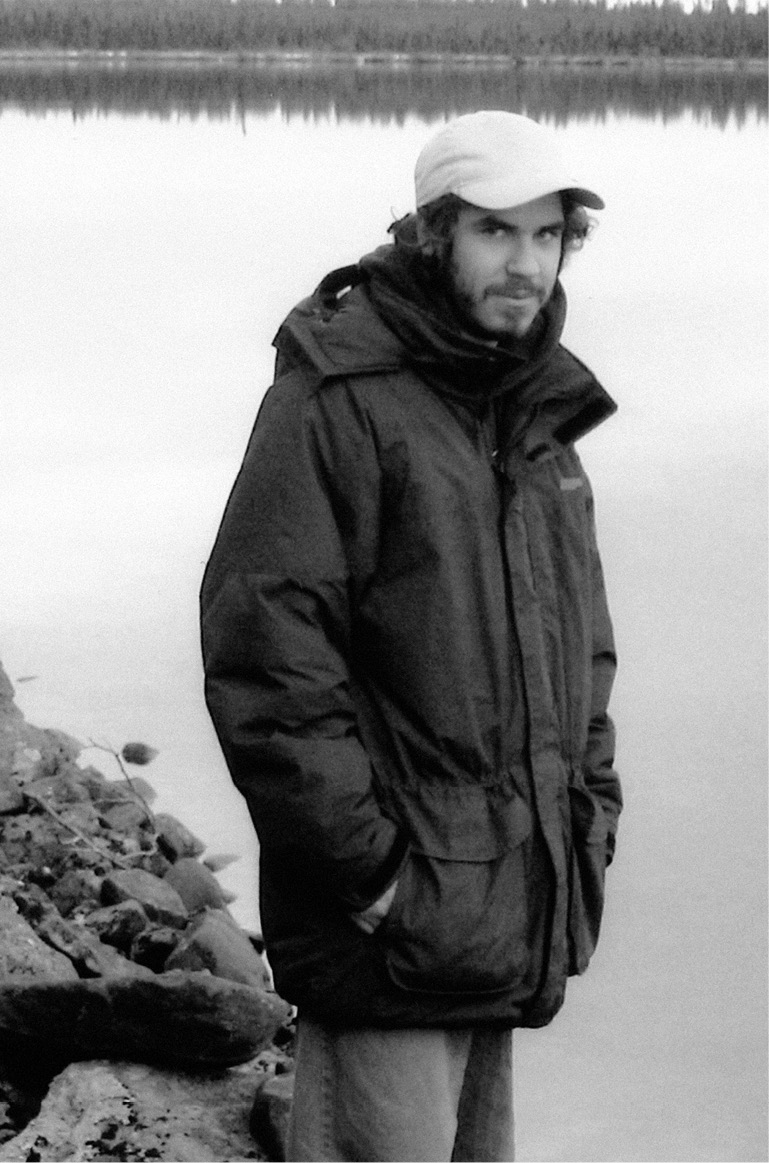
Figure 1. Kenton Joel Carnegie (19832005) near the scene of his death. (Photograph courtesy of Coroners Office, Government of Saskatchewan.)
Table of Contents
Introduction:
PART 1.
PART 2.
PART 3.
PART 4.
Introduction
The Truth
If Homo sapiens are going to survive into the future, we need accurate information about our environment. We rely upon the government to make decisions and hope those decisions are based on the very best science available. But we know that governments are likely to make choices based more on popularity than on evidence. Thats just the nature of our present system of elections and politics.
Scientists, on the other hand, dont have to be re-elected. They have a code for evaluating evidence, and we have become more trustful of scientists than politicians. We trust the scientific method to give us accurate answers.
But what happens when the government refuses to fund the necessary science? Or, even worse, when a scientist manipulates the data for political reasons? The following chapters outline what I saw in northern Saskatchewan surrounding the death of Kenton Joel Carnegie, a young man who went for a walk and never returned. His body was found a few hours after he had left a remote northern work camp. It was obvious to everyone involved in finding and recovering his remains that Kenton had been killed and partially eaten by wolves.
Prior to Kenton, there was no record of any human being killed by wild wolves in North America. Captive wolves had killed humans, but never wild wolves. Farley Mowat had written Never Cry Wolf , a book that drove that point home. It turns out that Mowat made up most of what he wrote, and Never Cry Wolf is more fiction than fact. But we can forgive him. He wasnt a scientist. His purpose was to sensationalize the wolf, and it worked. Public awareness of wolves increased. I read the book, and I too was fooled into believing it, even though I had grown up on a trapline and should have known better.
Over the past hundred years, wolves were almost exterminated from North America, mostly to accommodate cattle ranchers and on the insistence of big-game hunters. Sometimes governments were involved and paid bounties for wolves. Cattle ranchers and hunters are also voters. And, if you didnt know any better, it made sense to kill the wolves who attacked calves and competed with the hunters.

